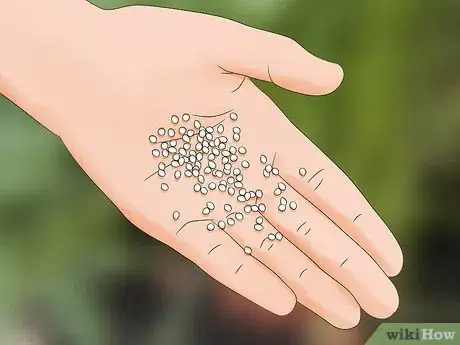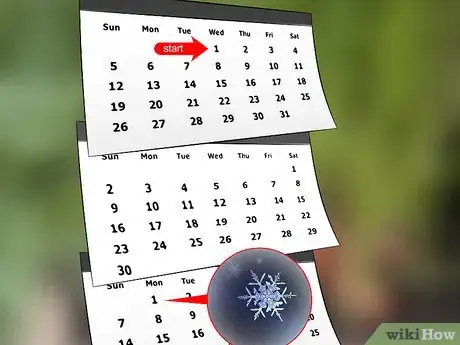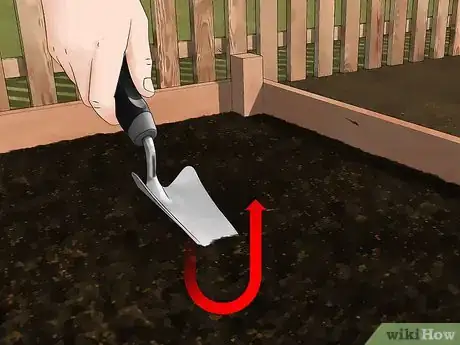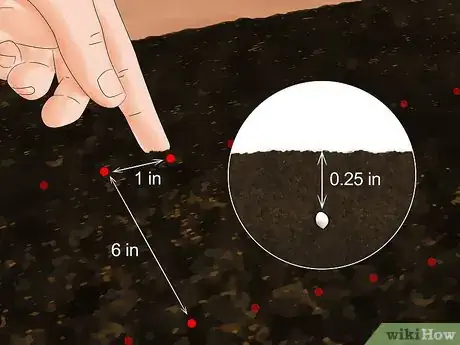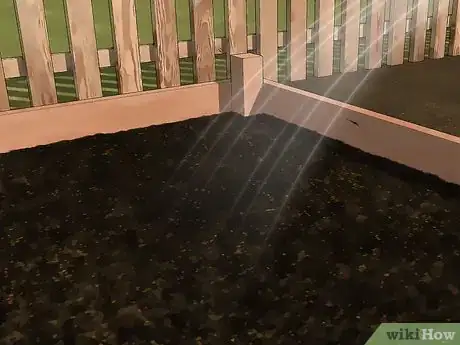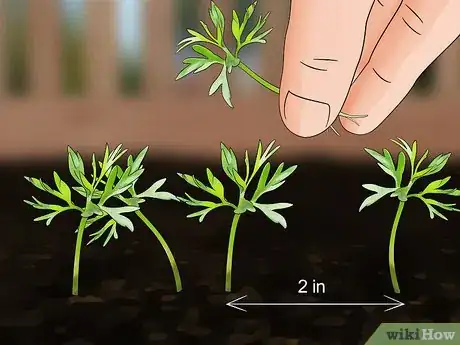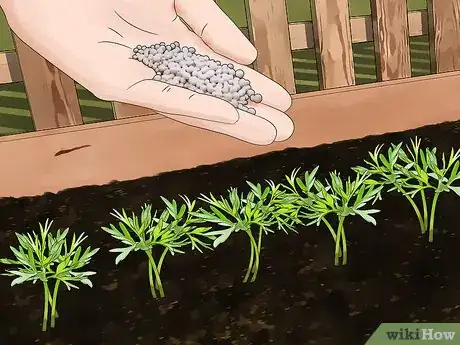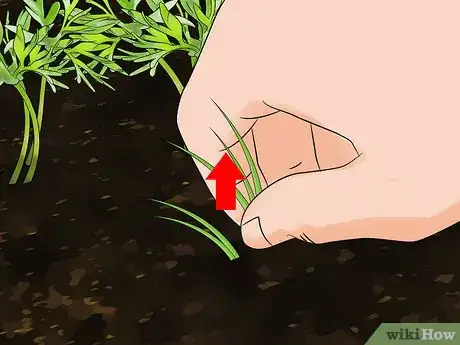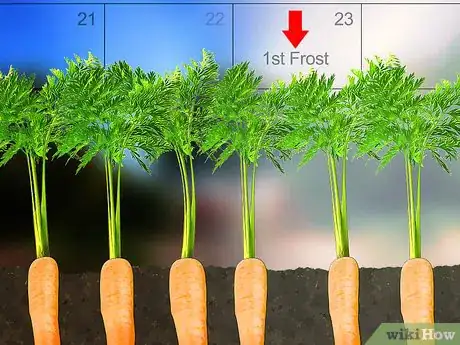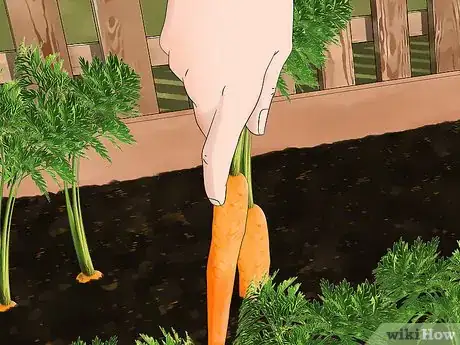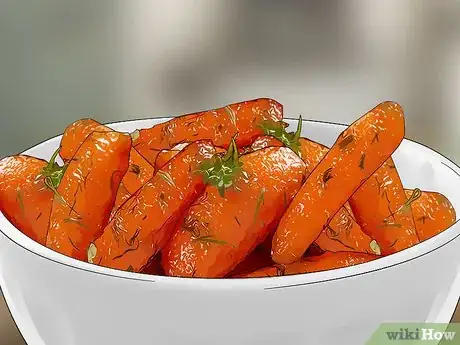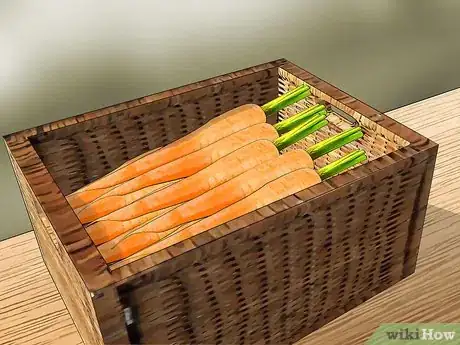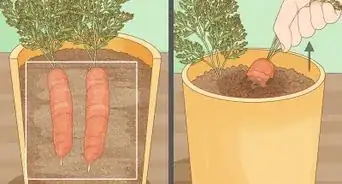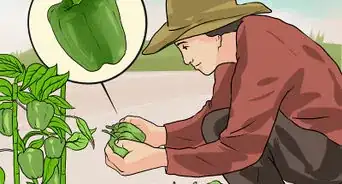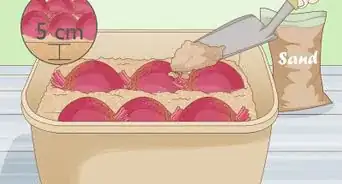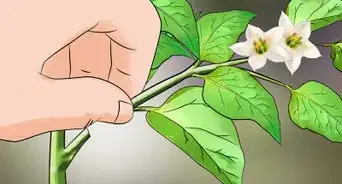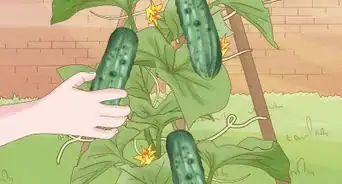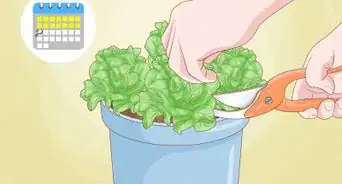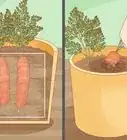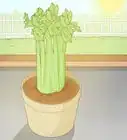This article was co-authored by Lauren Kurtz and by wikiHow staff writer, Sophia Latorre. Lauren Kurtz is a Naturalist and Horticultural Specialist. Lauren has worked for Aurora, Colorado managing the Water-Wise Garden at Aurora Municipal Center for the Water Conservation Department. She earned a BA in Environmental and Sustainability Studies from Western Michigan University in 2014.
There are 10 references cited in this article, which can be found at the bottom of the page.
This article has been viewed 53,508 times.
Baby carrots come in two types: immature carrots that are harvested when they are still small in size, or miniature strains of carrots that are small even when mature.[1] However, many grocery stores sell “baby carrots” that are actually manufactured from larger carrots by peeling and cutting them into a smaller size. If you would like to grow baby carrots yourself, the best way is to start with seeds of the miniature carrot variety, plant them in loose, rock-free, compost-rich soil, water them often and evenly, and harvest them once they mature.
Steps
Preparing to Plant
-
1
-
2Plant carrots in containers, raised beds, or in your garden. Just be sure you have enough room: you’ll need at least 8 in (20 cm) of depth, 1 in (2.5 cm) between each plant, and 6 in (15 cm) between rows.[4] Planting in containers can help keep critters from getting to your carrots.Advertisement
-
3Plant carrots 2-3 months before the first expected frost. It takes carrots 70-80 days to reach maturity, and they are best harvested just after being touched by frost. In the United States, the first fall frost typically takes place between September and October. For more specific information, see the frost dates by U.S. and Canadian city.[5]
-
4Prepare the soil. The soil should be a fine, loamy texture with a mix of nutrients, including lime. Adding compost can also help improve your soil quality, particularly if the compost has earthworm castings.[6]
- Dig up the area where you intend to plant and loosen the soil up to 8 in (20 cm) deep. Break up the sticky clumps of dirt.
- Remove as many rocks as possible from the soil, as they may impede the growing process.
- Remove all weeds from the area before planting your carrot seeds as well and make sure to continue weeding the area as the carrots grow.
Planting and Caring for Your Carrots
-
1Direct sow the carrot seeds. They should be 0.69 in (4.20 cm) deep, about 1 in (2.5 cm) apart, in rows 6 in (15 cm) apart. Cover the seeds gently with soil after planting. You can also plant radishes in between the rows to improve the harvest and break the soil for the carrots.
-
2Water the soil. Water gently so you don’t dislodge the seeds. Be sure to keep the seeds moist for about 2 to 3 weeks or until the sprouts have their first set of true leaves. Seeds may be slow to germinate but as long as you keep them moist they should sprout.
- Maintain a constant moisture for the carrots. This will prevent splitting and flavor loss as well as allow your carrots to mature fully.
-
3Thin the seedlings. Once the tops of the carrots reach 2 in (5 cm) tall, you may pull or snip the tops of every other carrot to leave the remaining carrots 1 in (2.5 cm) apart. If the carrots are too close together, they will grow crooked. Make sure they have enough space between them.[7] If you see any crowns popping up out of the soil cover them with a bit of mulch or soil to keep them from turning green or bitter.[8]
-
4Fertilize your carrots. Carrots should be fertilized once they reach 3 in (7.6 cm) tall. Choose a fertilizer with potassium and phosphate, but little nitrogen. This is because phosphate and potassium encourage root development and carrots are a root vegetable. Nitrogen encourages foliage production.[9]
-
5Weed the area frequently. This will prevent other plant species from taking up space meant for your carrots. Carrots don’t compete well with weeds, and may be overtaken by them if the area is not weeded properly. Other plant species also attract root flies, which can ruin your crop.[10]
-
6Watch for common pests and diseases. It is important to protect your growing carrots, and there are several common pests that may try to get at them. Some common pests to watch for include:[11]
- Four legged pests such as deer, rabbits, woodchucks, and gophers. You can either put up a fence around your carrots or plant your carrots in a raised bed to protect against these pests.
- Carrot rust flies. These look similar to regular green houseflies, but their eyes are red and their heads are yellow. They can infest the roots of your carrots and cause them to rot. You can prevent an infestation by placing a floating cloth over the carrots or by waiting to plant your carrots until early summer rather than planting in spring.
- Parsley worms. These pests are striped caterpillars that like to eat the tops of carrots. If you find these, don’t kill them. Transfer them to other plants in the carrot family, such as Queen Anne’s lace, so that they can transform into butterflies later on.
- Leaf blight. This is a common carrot disease that turns the leaves brown. Your best option for preventing this disease is to plant carrot cultivars that are resistant to it.
Harvesting Your Carrots
-
1Wait until the first frost has touched the carrots. This is when the carrots will be at their sweetest. The taste of carrots improves as they mature, but don’t leave mature carrots in the ground longer than necessary as many animals like to eat them.[12]
-
2Harvest your carrots. Gently dig around the top of the carrot to loosen the soil. Pull the carrots out of the ground and cut off the leaves, leaving a little stem remaining. Gently brush off the dirt. Don’t wash the carrots with water until you are ready to eat them. This will allow you to store your carrots for longer.
-
3Enjoy your carrots! Carrots can be used in a variety of dishes. Miniature carrots have a sweeter taste than some other varieties. They are delicious raw, roasted or in carrot cake.
-
4Store any extra carrots. Don’t wash them first, just brush off the clumps of dirt. You can store extras by placing them in a box of slightly moist peat or sand. Store them in a dark and cool, but frost-free, area. They will keep for a few months.
Things You'll Need
- Miniature carrot seeds
- A good place to garden
- A method of weed control
References
- ↑ http://www.carrotmuseum.co.uk/babycarrot.html
- ↑ http://www.burpee.com/vegetables/carrots/carrot-little-finger-prod000634.html
- ↑ http://www.ufseeds.com/Parisian-Carrot-Seeds.item
- ↑ http://www.rodalesorganiclife.com/garden/your-guide-growing-carrots
- ↑ http://www.almanac.com/content/frost-chart-united-states
- ↑ http://www.motherearthnews.com/organic-gardening/learn-how-to-grow-carrots-zmaz08aszgoe
- ↑ http://www.rodalesorganiclife.com/garden/your-guide-growing-carrots
- ↑ https://morningchores.com/growing-carrots/
- ↑ http://www.backyard-vegetable-gardening.com/watering-carrots.html
- ↑ https://www.quickcrop.ie/learning/plant/carrot
- ↑ https://www.goodhousekeeping.com/home/gardening/a20705702/how-to-grow-carrots/
- ↑ http://www.motherearthnews.com/organic-gardening/learn-how-to-grow-carrots-zmaz08aszgoe
- ↑ http://www.motherearthnews.com/organic-gardening/learn-how-to-grow-carrots-zmaz08aszgoe
- ↑ http://www.motherearthnews.com/organic-gardening/learn-how-to-grow-carrots-zmaz08aszgoe
About This Article
To grow baby carrots in your own garden, prepare the soil by adding compost and tilling thoroughly to remove any weeds, dirt clumps, or rocks that might interfere with the growing process. Then, place the seeds in the soil 1/4 inch deep, about 1 inch apart, with at least 6 inches between rows, and cover the seeds with soil. Be sure to keep the soil most for 2 to 3 weeks after planting, apply fertilizer as needed, and weed the garden often. Wait until the first frost to harvest your carrots, and enjoy! For more info from our Horticulturist reviewer, including how to harvest your carrots properly, read on!
